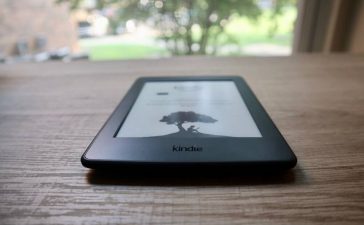COVID-19 pandemic has intensely affected peoples’ lives and the required preventive behaviours such as the complete or partial lock-down, curfew hours, social distancing, wearing face mask, frequent hand washing have impacted the daily routine of individuals. The current study was conducted to investigate the factors affecting the practice of the recommended preventive behaviours to COVID-19 by applying the HBM constructs to assess the relationship between perceptions regarding COVID-19 as an emerging disease and the precautionary behaviours practice of the study participants. The present study results also highlighted the sociodemographic factors related to COVID-19 perceived susceptibility, perceived severity, perceived benefits, and perceived barriers and cues to action and practice score.
The most frequently reported preventive behaviours by the study participants in the seven days preceding the survey were always avoiding using public transportation (73.3%.), covering mouth and nose with tissue or elbow when sneezing or coughing and wearing mask outside home accounting for 66.7% and 66.4% respectively. Always washing hands regularly with soap and water or sanitizers for at least 20 s after handling money or using ATM or touching any surfaces or objects was less frequently reported (56%). These percentages are similar to the results of a study in Pakistan in which wearing face mask when outside was reported by 71% while washing hands and using sanitizers was practiced by 60% of the study participants [4]. The results of a survey of Chinese general population in Wuhan and Shanghai revealed that 86.7% often wear a face mask when outside. The much higher engagement in the precautionary behaviour reported in the latter study may be due to the fact that China and especially Wuhan is the epicentre of the pandemic and consequently people may be more anxious to follow the preventive behaviours [16]. Inversely, always wearing a face mask when outside was only reported by 25.1% of asymptomatic Latino population in the United States of America [17]. In addition, the most frequently reported precautionary behaviour in many studies from Asia is washing hands and using sanitizers [4, 18]. The latter behaviour was among the less frequently reported behaviours among the current study participants. The difference may be due to the question itself as in the present study, the question specified the duration of hand washing and the situations as well as answers were graded on a Likert scale from always to never, not a dichotomous yes or no answer consequently may be fewer positive responses were reported. Also, it may be difficult to find a source of clean water outside home and sanitizers are not commonly used by the Egyptian community as they are expensive.
It is crucial to understand the key elements that influence individuals’ compliance to the required practice of preventive behaviours to be able to tailor future risk communication interventions. The current study showed some sociodemographic factors that impact perceived susceptibility, severity, benefits and barriers as well as cues to action and perceived self-efficacy. Linear regression analysis revealed that older age, male gender, living inside Cairo and high perceived barrier score were independent variables for lower practice score of preventive behaviours. A better practice of precautionary behaviour among women was also observed in other studies [19, 20]. Lau et al. showed that, in the case of the 2009 H1N1 epidemic in Hong Kong, women followed precautionary behaviours more often than men [20]. Furthermore, in the present study older age was an independent statistically significant variable for low practice score this finding agrees with Azlan et al. study among the Malaysian public that showed older age group above the age of 50 were less likely to avoid crowded places or wear face masks [21].
Similarly, an online study that assessed the level of preparedness for disasters caused by COVID-19 in Serbia revealed that younger study participants reported the highest level of restriction on movement as a preventive measure [22]. Inversely, an online survey in North America and Europe to determine barriers and facilitators to adherence to social distancing during COVID-19 showed that older study participants (> 45 years old) were more likely than younger individuals (18–24 years old) to adhere to social distancing measures by avoiding socializing in person and maintaining a safe distance (1–2 m) in public places [22].
In the current study bivariate analysis showed that perceived severity and perceived benefits increased significantly with age (p < 0.001, p = 0.002) respectively and contrariwise perceived self-efficacy, cues to action and practice score decreased significantly with age (p = 0.1, p < 0.001 and p < 0.001) respectively. This may be due to the fact that although there is high perception of severity there is less self-efficacy and cues to actions whether external as exposure to media, social media or internal so may be older age needs tailored interventions targeting them.
Then again, perceived barriers refer to an individual’s perception of obstacles to behavioural change [23]. examples of barriers include the costs, perceived risk of side effects and discomfort related to practicing specific preventive behaviour. Perceived benefits and perceived barriers are the opposite of each other. If the perceived benefit from a specific practice outweighs the perceived barrier, the individual may practice the preventive behaviour. In the current study perceived barriers were inversely related to the practice score of COVID-19 preventive behaviors. This agrees with the findings of a study from Iran in which increased perceived barriers and fatalistic beliefs significantly reduced the adherence to the recommended precautionary behaviours [23]. The main reported barriers in the above mentioned study were environmental barriers such as lack of availability of face masks, sanitizers and alcohol pads [24]. In the current study cost of wearing masks and using soap and water and sanitizers were perceived as barriers by 36.7% and 26.1% of study participants respectively.
In the present study increased perceived susceptibility, increased perceived benefits, increased cues to action and increased perceived self-efficacy scores were associated with higher practice score. These findings agree with Park et al., study results showing that study participants who perceived the severity of contracting H1N1 influenza reported washing their hands more frequently [25].
Additionally, the current study results suggest that social media and websites can play an important role in risk communication and shaping risk perception in the community as 76.8% of study participants reported WHO website, Other websites, MOHP website and Facebook as their most favourable source for obtaining information on COVID-19. The most favourable source was WHO website (28.9%) followed by other websites (22.0%), Ministry of Health and Population website (17.1%) and Facebook (8.8%). Similarly, a study from China revealed that 97.8% of study participants’ main sources of pandemic information were social networking apps like WeChat [26]. The rising trend of using social media to access information has been observed in many studies and this may be due to increasing ease of access and appeal. Consequently, policymakers should carefully assess the quality of information transmitted through social networks during pandemics like the COVID-19 outbreak. Furthermore, a range of information sources should be employed when conveying vital health information to ensure that various populations have timely access to critical knowledge [27].
The findings of this study show the need of using HBM components as a framework during pandemics or epidemics to tailor interventions that can affect community-wide health-promoting behaviours, particularly interventions that target barriers and improve self-efficacy of vulnerable populations especially older age groups. The current study also demonstrated that older age, male gender living inside Cairo as well as perceived barriers were inverse variables significantly affecting practice. So, it’s important to concentrate the efforts on the obstacles especially the ones associated as providing face masks and sanitizers at affordable cost as well as increasing awareness campaigns targeting older age group and Cairo residents.
Perceived illness risk and belief in the effectiveness of protective measures are the key factors influencing the adoption of precautionary behaviors during pandemic scenarios. According to the findings of this study, stressing risk perception and efficacy beliefs in the COVID-19 prevention message can drive people to engage in preventive actions. This agrees with Guidry et al. 2020 study that showed willingness to get COVID 19 was [positively predicted by high perceived susceptibility to COVID-19, high perceived benefits of the vaccine, low barriers to the vaccine, and scoring high on self-efficacy for getting the vaccine [28].
The present study was conducted in the early phase of pandemic further researches in subsequent waves can be highly beneficial in understanding community behaviour in pandemics. A framework for the modification of beliefs and adherence to COVID-19 preventive behaviour might be created by designing an educational intervention on the basis of the HBM especially by providing cues to action by way of showing various reminders via social media to prevent illness. The discovery of the obstacles and drivers of different behaviors could provide helpful points for the creation of communication strategies. This can be used to overcome COVID 19 vaccine hesitancy as well as immunizations reluctances and customise additional interventions. When creating initiatives and public health campaigns that promote vaccination it is important to take health beliefs into consideration. However, such campaigns should consider not just the HBM components but also geographic (country, area), socioeconomic status (income, education), and other demographic (age, gender, and employment) aspects that can affect a person’s decision to get immunized or engage in any other healthy behavior.
Limitations of the study
Due to the COVID- 19 limiting situation, data was collected using an electronic questionnaire forwarded via the virtual networks in WhatsApp and Facebook groups. As a result, convenient sampling was used consequently study results cannot be generalized to the Egyptian adult population. Furthermore, older adults and illiterate groups were not included in the study sample as they are less likely to use social media and internet and are not able or interested to fill such surveys.












